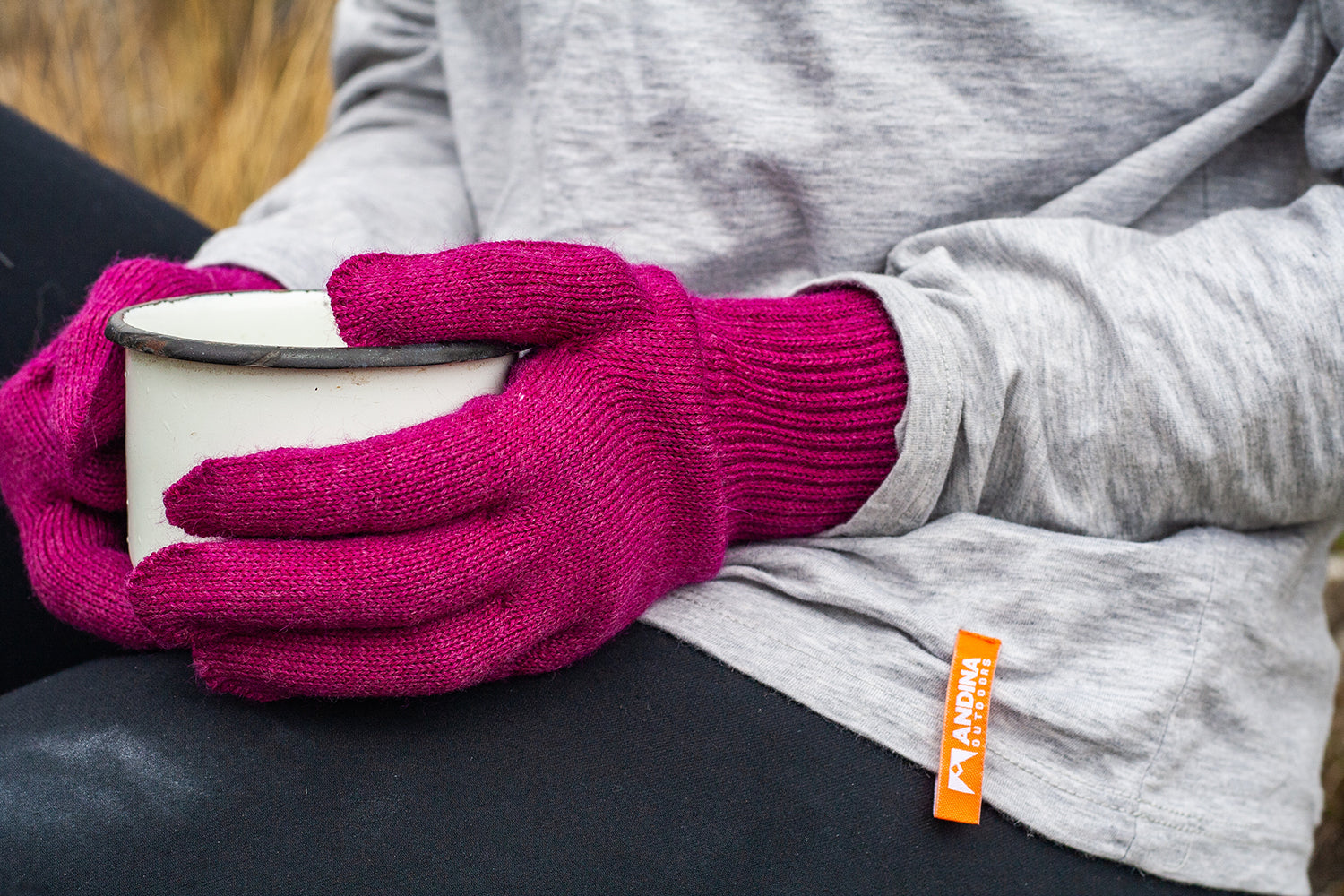Hiking is more than just a hobby—it's a transformative way to explore nature, stay healthy, and find mental clarity in an often chaotic world. Whether you're wandering through forest trails, traversing desert landscapes, or exploring alpine meadows, hiking allows you to connect with the environment in an intimate, meaningful way. If you're wondering how to start hiking, this guide is tailored to help you feel confident, prepared, and inspired to take your first steps outdoors.
At Andina Outdoors, we understand that starting any new activity can feel overwhelming. Our goal is to make hiking for beginners not only accessible but enjoyable and sustainable. Whether you're looking for the best beginner hikes near you or wondering what to wear hiking, this hiking preparation guide will walk you through it all—clearly and practically.

Why Hiking? The Benefits Beyond the Trail
Hiking offers a variety of benefits for the body and mind. For many beginners, the initial draw may be fitness or the desire to disconnect from digital life. But the deeper you go—into both nature and the hiking experience—the more meaningful it becomes.
- Physical wellness: Regular hiking improves cardiovascular health, strengthens your muscles (especially legs and core), and boosts stamina.
- Mental health benefits: Time on the trail reduces anxiety, combats depression, and improves focus.
- Connection with nature: Hiking allows for a slower, more intentional appreciation of the natural world, something that aligns deeply with the sustainable values at the heart of Andina Outdoors.
- Accessibility: With countless beginner hiking trails across the United States, you don’t need to travel far or invest heavily to get started.
Many newcomers are surprised to find that hiking is a low-barrier, high-reward activity. All it takes is a bit of preparation, a sense of adventure, and the willingness to learn as you go.
Step 1: Choosing the Right Beginner Trail
One of the most important beginner hiking tips is to start small and choose the right trail. Picking a manageable route not only builds confidence but ensures a safer and more enjoyable experience.
What Makes a Good Beginner Trail?
Beginner hiking trails typically feature:
- Shorter distances (1–3 miles)
- Clearly marked paths
- Little to moderate elevation gain
- Accessible trailheads with facilities such as parking and restrooms
How to Find Easy Hikes Near You
You don’t need to head to a national park to get started. Many city and state parks offer scenic and well-maintained beginner hiking trails. Use tools like AllTrails, Gaia GPS, or local tourism websites. Also consider reaching out to local outdoor clubs or park rangers for suggestions.
Look for terms like:
- “Best beginner hikes”
- “Easy hikes near me”
- “Family-friendly trails”
- “Nature walks with low elevation”
Remember: It’s okay to start slow. Your trail doesn’t need to be dramatic or remote. The most important thing is that it matches your comfort and fitness level.

Step 2: Understanding Hiking Gear for Beginners
When starting out, gear can feel intimidating. However, the essentials are straightforward and manageable. Investing in quality hiking gear for beginners can significantly improve your experience, especially if you’re planning on hiking regularly.
Hiking Footwear
Footwear is arguably the most important piece of gear.
- Trail Shoes: Lightweight, breathable, and ideal for well-groomed trails.
- Hiking Boots: Offer more ankle support and are better suited for rocky or uneven terrain.
- Socks: Avoid cotton. Choose wool or synthetic blends to reduce blisters and wick moisture.
Fit is key. Visit a store that specializes in outdoor footwear or read detailed fit guides online. If you're unsure where to start, Andina Outdoors offers resources that explain how to choose the right footwear based on terrain and personal preference.
What to Wear Hiking
Layering is the most effective way to dress for hiking. This allows you to adjust to changing temperatures and conditions.
- Base Layer: Moisture-wicking materials (avoid cotton).
- Insulation Layer: Lightweight fleece or puffy jacket for cooler temperatures.
- Outer Layer: A breathable, waterproof jacket for wind or rain.
- Pants: Quick-drying hiking pants or leggings. Avoid jeans or heavy cotton.
- Accessories: Hat, sunglasses, and lightweight gloves (in colder climates).
The focus should be on comfort, breathability, and flexibility. At Andina Outdoors, we place an emphasis on performance textiles that are environmentally conscious and ethically produced—perfect for those who want to hike sustainably.
Hiking Backpack Essentials
A well-fitted daypack makes it easy to carry everything you need without strain. Look for backpacks with padded straps, adjustable chest/sternum straps, and enough volume (15–25 liters for day hikes).
Pack your Day Hiking Checklist, which should include:
- Navigation: Map, compass, or GPS
- Sun protection: Sunscreen, sunglasses, hat
- Extra clothing and rain gear
- Headlamp or flashlight
- First-aid kit
- Snacks and high-energy food
- Water (1.5–3 liters depending on conditions)
- Knife or multitool
- Firestarter (matches, lighter)
- Emergency blanket or bivy
This list, known as the “Ten Essentials,” is a cornerstone of any hiking 101 guide.

Step 3: Hiking Preparation Guide for a Safe Experience
Hiking is safe when done with preparation and common sense. These hiking safety tips can help you avoid common beginner pitfalls.
Plan Ahead
Before you set out:
- Check the weather forecast.
- Study your trail and know approximate duration and elevation.
- Let someone know where you’re going and when you expect to return.
- Charge your phone and bring a power bank.
Understand Trail Etiquette
Good etiquette helps maintain harmony among trail users and protects natural areas.
- Yield to hikers going uphill.
- Stay on the trail—don’t cut switchbacks.
- Keep dogs leashed and clean up after them.
- Avoid loud music; let nature provide the soundtrack.
- Follow Leave No Trace principles: pack out all trash, avoid disturbing wildlife, and leave what you find.
As part of our values at Andina Outdoors, we believe in enjoying the outdoors responsibly. Respect for the environment ensures that trails remain pristine for future generations.

Step 4: Fuel and Hydration
Beginners often underestimate the importance of nutrition and hydration on hikes. Always bring more than you think you’ll need.
- Water: Aim for at least half a liter per hour of moderate hiking. Double that in heat or at elevation.
- Food: Bring nutrient-dense snacks—trail mix, protein bars, dried fruit, jerky. Avoid overly salty or sugary items.
- Hydration Tips: A hydration bladder makes sipping water easier than bottles. If your hike is long, consider water purification options like tablets or filters.

Step 5: Go Solo or With a Partner?
Many beginners wonder whether to hike alone or with others.
Hiking with a Partner
- Safer in case of emergency
- Motivating and more enjoyable
- Helpful for navigation and decision-making
Hiking Solo
- Peaceful and empowering
- Ideal for introspection
- Requires more caution
If going solo, be extra diligent about your planning, route selection, and emergency preparation. Carry a whistle, a fully charged phone, and consider a personal locator beacon or GPS messenger.

Step 6: First Aid, Hygiene, and Special Considerations
Health and comfort matter on the trail.
- Learn basic first aid—treating blisters, minor cuts, and insect bites.
- Use the bathroom at least 200 feet away from water sources.
- For menstruation, pack out used products in a sealed bag.
- Carry hand sanitizer and biodegradable wipes.
These details, while often overlooked, can make or break a hiking trip—especially for those new to the experience.
Building Confidence: Your First Few Hikes
Don’t try to do too much too soon. Start with short, well-traveled trails. Reflect on what worked and what you’d change. Gradually increase distance and difficulty as your fitness and skills improve.
Document your hikes. Take notes, photos, or even keep a journal. This helps build a personal connection with hiking and reminds you of your progress.
Over time, you’ll begin to crave the trail—and with each hike, you’ll become more capable and confident.

Final Thoughts: Let Your Journey Begin
Learning how to start hiking is not about achieving a summit on your first try—it’s about taking the first step with intention, curiosity, and respect. As a beginner, you’re entering a lifestyle that rewards patience, preparedness, and a deep appreciation for the natural world.
At Andina Outdoors, we’re here to support your journey with thoughtfully designed gear and educational resources. We believe that sustainable materials, ethical production, and smart design can elevate your outdoor experience from the very beginning.
Wherever your path leads, we hope this hiking preparation guide encourages you to get outside, stay safe, and discover the quiet joy of the trail.
Discover Our Sustainable Hiking Gear
Explore outdoor gear crafted with care and built to last—perfect for new hikers looking to start off on the right foot. From layering-friendly alpaca garments to ergonomic hiking accessories, Andina Outdoors supports your outdoor adventures from trailhead to summit.
Visit our shop at andinaoutdoors.com to browse hiking gear for beginners and sustainable outdoor apparel.


